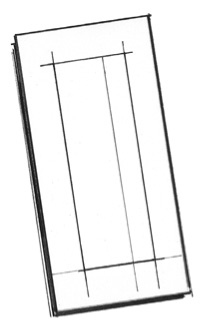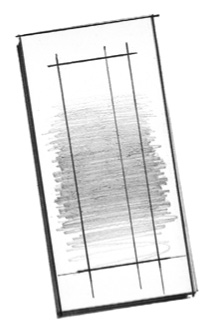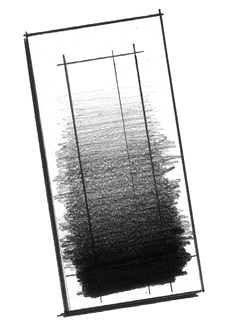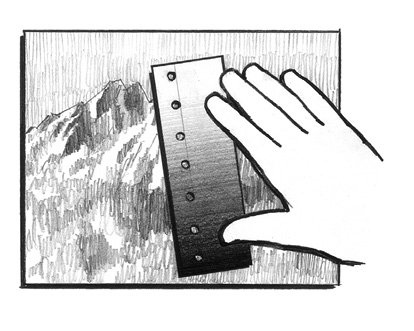
STEP 1 Draw a Rectangle
Draw a 2" × 6" (5cm × 15cm) rectangle on a 4" × 8" (10cm × 20cm) piece of drawing paper. Add a line down the middle right of the rectangle as a guideline for the holes you will punch out in the last step.
You can use a value scale to compare the values of a scene with that of a drawing. Hold the value scale up to the subject and look through the holes punched along the side. Where do the values in the subject fall on the value scale? As you begin to compose a drawing, it is always best to establish the highlights and very light areas. Sketch those in, then look for where the other values are in the subject. To fill in the other values, one option is to go from the lightest shades of the drawing to the darkest. Another way to map out the values is to fill in some of the darkest areas around the lightest areas, then work with the midtones last. Try each of these methods to see which one works best for you.

STEP 1 Draw a Rectangle
Draw a 2" × 6" (5cm × 15cm) rectangle on a 4" × 8" (10cm × 20cm) piece of drawing paper. Add a line down the middle right of the rectangle as a guideline for the holes you will punch out in the last step.

STEP 2 Create the Lighter Values
Keeping the top white, use a 4H pencil to create the lighter values with back-and-forth strokes.

STEP 3 Add the Middle Values
Add the middle values with an HB pencil.

STEP 4 Add the Darkest Values
Use a 4B pencil for the darkest values. With scissors, trim around the rectangle pattern you drew, and punch seven holes along one side with a hole punch.

STEP 5 Map Out the Value Variations in Your Reference Photos
Now you can hold your scale up to a picture or scene to judge the values as you work on your drawings.